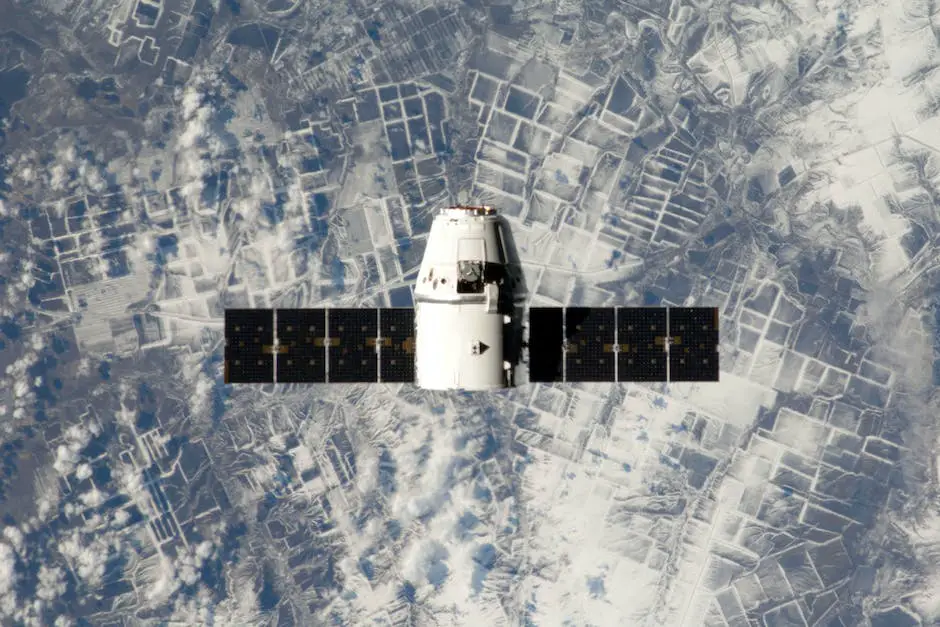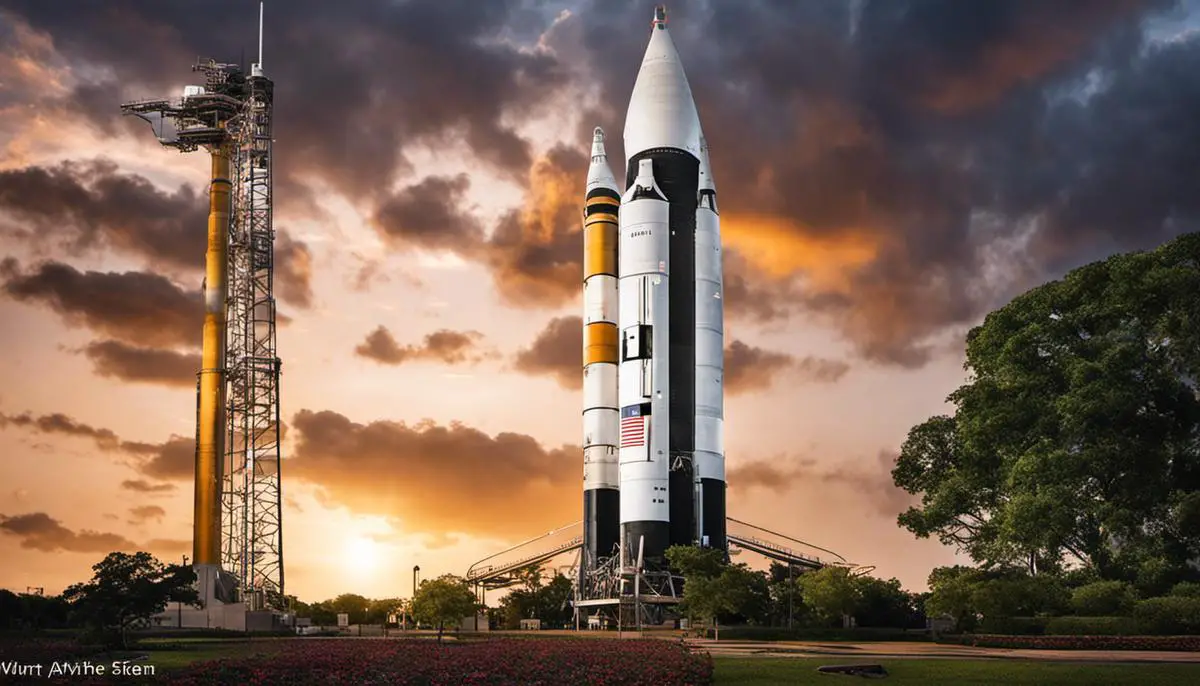The journey of rocket technology since the historic Apollo missions has been nothing short of revolutionary. From the renowned Saturn V, the epitome of ambition and achievement during the Apollo era, to the dawn of reusable rockets that have become the paradigm today, the evolution has been staggering. This analysis delves into various stages of this journey, thoroughly examining the milestones, technological shifts, and key players that have significantly influenced the direction of rocket development. As we stand on the brink of another monumental epoch, this time aimed at Mars and even beyond, it is imperative that we reflect on the brilliant past while gazing at the promising future of rocket science.
Contents
- 1 The Saturn V Rocket: Masterpiece of the Apollo Program
- 2 Post-Apollo Advancements: From Space Shuttle to Falcon
- 3 Rocket Propulsion: Changes in Types and Techniques
- 4 NASA and Private Sector: Competitive or Collaborative?
- 5 Future of Rocket Technology: Towards Mars and Beyond
- 5.1 A New Era: Apollo Missions and Their Technological Breakthroughs
- 5.2 Saturn V Rocket
- 5.3 Lunar Rover
- 5.4 Command Service Module
- 5.5 Challenges of Mars Missions and Interstellar Exploration
- 5.6 Propulsion Technology for Longer Distances
- 5.7 Life Support Systems and Habitats
- 5.8 Psychological Challenges of Long Duration Missions
- 5.9 Radiation Protection
The Saturn V Rocket: Masterpiece of the Apollo Program
Design and Development of the Saturn V Rocket
The Saturn V, a human-rated super heavy-lift launch vehicle, was the brainchild of Wernher von Braun, the father of the American space program. Conceived in NASA’s Marshall Space Flight Center, the Saturn V stands as one of the most powerful rockets ever designed and built by the National Aeronautics and Space Administration (NASA). The three-stage rocket was developed during 1961-1962, following President John F. Kennedy’s directive to land humans on the Moon. The Saturn V is 363 feet tall — taller than the Statue of Liberty — and with its Apollo Spacecraft, weighs 6.2 million pounds.
Significant Features of Saturn V
Saturn V was an engineering marvel designed to withstand the rigors of human spaceflight. It was built from segments designed to be discarded sequentially as fuel for each segment was depleted. The rocket comprised three stages, S-IC, S-II, and S-IVB, each fueled by a different type of propulsion technology.
The first stage (S-IC) was powered by five F-1 engines burning RP-1 and liquid oxygen (LOX) producing a total of 7.5 million pounds of thrust — enough power to lift the entire spacecraft off the ground. The F-1 remains the most powerful single-nozzle liquid-fueled rocket engine ever developed.
The second stage (S-II) was powered by five J-2 engines that burned LOX and liquid hydrogen (LH2). The combination provided 1 million pounds of thrust. The S-II was unique in its use of a common bulkhead between the LOX and LH2 tanks, a design feature critical in improving efficiency and reducing weight.
The third stage (S-IVB), propelled by a single J-2 engine, was the stage responsible for inserting the Apollo spacecraft into a trans-lunar trajectory. The critical Lunar Orbit Insertion burn, inflating the speed to over 24,000 miles per hour, was achieved by this stage.
Construction and Launch Procedure of Saturn V
The construction process of the Saturn V was formidable. Each stage was manufactured individually and then brought together for the final assembly. The construction was a crucial project involving numerous subcontractors from across the United States, coordinated by Boeing.
During launch, the stages of the Saturn V were activated sequentially. The five F-1 engines of the S-IC stage ignited first, taking the Saturn V to an altitude of about 42 miles. Next, the S-II stage took over, accelerating the Apollo craft to 15,300 miles per hour. Lastly, the S-IVB stage fired twice — first to achieve Earth parking orbit and then for the trans-lunar injection.
Saturn V Rocket: An Unparalleled Leap in Rocket Technology
Recognized for unleashing new possibilities in the realm of space exploration, the Saturn V rocket stands as a noteworthy landmark in rocket technology. This spacecraft spearheaded humanity’s venture beyond the orbit of Earth, setting innovative benchmarks that lay the groundwork for the contemporary Artemis program of NASA – a future-oriented endeavor focusing on lunar exploration. By carrying humans to the lunar surface, Saturn V not only transformed the course of space exploration but also left an indelible legacy as a technological triumph.

Post-Apollo Advancements: From Space Shuttle to Falcon
The Post-Apollo Chapter: The Emergence of the Space Shuttle Program
In the wake of the culminating Apollo missions in 1972, NASA ventured into a novel realm of space exploration by launching the groundbreaking Space Shuttle program. Unlike the single-use rockets adopted in the Apollo missions, space shuttles were built with an emphasis on reusability, marking them as the pioneering spacecrafts capable of ferrying substantial payloads to and fro from Earth’s orbit.
One such commendable space shuttle was ‘Enterprise’, unveiled in 1976. As the inaugural orbiter from the shuttle program, the ‘Enterprise’ played a pivotal role in conducting valuable approach and landing tests, essentially defining the course of future spacecraft designs. Moreover, the shuttle program facilitated crucial operations, such as the installation and maintenance of significant scientific instruments like the Hubble Space Telescope in space. Despite these accomplishments, the Space Shuttle program confronted numerous setbacks and tragedies, particularly the Challenger and Columbia disasters. After a span of 30 years, the program was terminated in 2011, paving the path for the dawn of a new age in rocket technology.From Space Shuttles to SpaceX
The advent of companies like SpaceX has further altered the landscape of space exploration. SpaceX’s Falcon series, particularly the Falcon 9, was designed as a reusable two-stage rocket, improving upon previous technology’s cost-effectiveness and reliability. Its first stage is capable of returning to a landing site and being refurbished for reuse, a first in orbital spacecraft.
One key milestone achieved by Falcon 9 was the delivery of the Dragon spacecraft to the International Space Station (ISS), making Falcon 9 the first commercial spacecraft to visit the ISS. This breakthrough drew attention to the possibility of private-sector contributions to space exploration.
Additionally, SpaceX pushed the boundaries further with the Falcon Heavy – the most powerful operational rocket in the world. It has the ability to carry large payloads to orbit and supports missions far beyond earth, increasing the possibility of manned missions to Mars.
A pivotal moment for rocket technology came in April 2021 when the Falcon Heavy launched and successfully returned its two side boosters to the launch site. The center core also landed successfully on a drone ship in the Atlantic Ocean. This event marked a new era for space exploration and the potential reuse of rockets, significantly reducing the cost of space travel.
Climbing from Apollo to Starship: The Trajectory of Reusable Rocket Technology
The concept of rocket reusability has escalated dramatically with the development of the Starship spacecraft, which is explicitly engineered for complete recyclability. This interplanetary vessel is designed to ferry both human and non-human payloads to various spatial destinations, essentially operating as an astronautical passenger carrier. Currently in its testing phase, this rocket is projected to transport up to 100 individuals to Mars when fully functional.
Tracing these sequential advancements in rocket technology signifies a quantum jump from the epoch of the Apollo missions. By comprehending these progressive developments and their implications on space voyages, we can envision a steady march towards a time when space trips could become less elite and more frequent.

Rocket Propulsion: Changes in Types and Techniques
Revolutionizing Rocket Propulsion Systems: From Apollo Missions and Beyond
The Apollo venture defines a major turning point in the annals of space reconnaissance and rocket engineering, inducing various milestones. The impulsion technology implemented in the Apollo program, specifically the Saturn V rocket, although seemingly simplistic compared to the present leaps, was instrumental in establishing the groundwork for future advancements.
The Saturn V rocket was fueled by a multileveled, chemically-driven propellant system to reach escape velocity. It utilized a liquid bipropellant mixture of Rocket Propellant 1 (RP-1), a highly purified type of kerosene, and liquid oxygen (LOX) for its initial stage, and liquid hydrogen (LH2) with LOX for the following two stages. Each of these stages stood for significant breakthroughs in rocket technology during the Apollo timeline.
Transition to More Efficient Fuel Systems
As the first human exploration missions requiring extended travel in space, fuel efficiency was of paramount importance in the Apollo missions. Today, the search for more efficient and feasible propellants is critical. There has been a shift from the kerosene-LOX combination to engines powered by other propellants, such as liquid hydrogen, liquid oxygen, and hydrazine. These provide a more efficient burn, and are therefore more suitable for the extended travel times of modern space missions.
For instance, the development of ion propulsion engines represents a significant breakthrough in space exploration. This technology uses an electrical charge to accelerate ions to expel them from the rear of the spacecraft, hence propelling it forward. Though ion thrusters create less thrust compared to chemical rockets, they require less propellant and can function over much longer periods, offering efficient propulsion for interplanetary missions.
Engine Designs Advancement
Another significant area of advancement has been in rocket engine designs. Engineers have made significant strides since the Apollo missions on improving the engines’ durability and functionality. For example, the F-1 engines used in the Saturn V rocket had limited use; they could only be ignited once and relied on manual pipe routing for their cooling systems.
Modern engines, such as the RS-25 used in NASA’s Space Launch System, incorporate more advanced technologies like 3D printing for constructing engine parts, sophisticated computer modeling, and automatic cooling mechanisms. The RS-25 engines are also reusable, and can be fired multiple times, making them more cost-efficient.
Multiple Firings Engine Development
One of the largest milestones in rocket technology since the Apollo missions has been the development of engines capable of multiple firings. Single-use engines, like those on Saturn V rockets, are jettisoned after use and either burn up in the atmosphere or fall into the ocean. This approach is not cost-efficient nor sustainable.
In recent years, technology has advanced to allow for reusable rockets. Companies such as SpaceX and Blue Origin have developed systems where the rockets’ first stage can land back on Earth after delivering cargo into space, allowing for refurbishment and reuse. This technology represents a significant step forward in creating sustainable space travel.
The Evolution of Rocket Technology since Apollo
The advancements made during the Apollo program have served as a foundation for the continuous development and enhancement in rocket technology. The pioneering research in areas such as propulsion methods, engine configurations, and recyclable components during this era have paved the way for a future where efficient, cost-effective, and sustainable space exploration is a reality.

NASA and Private Sector: Competitive or Collaborative?
From NASA Dominance to Private Sector Competition in Rocket Engineering
The competitive dynamic within the field of rocket engineering has significantly evolved since the Apollo era. Initially, NASA and its chain of contractors held a near-monopoly over American space exploration technology. However, with time, this scenario has changed dramatically. Enterprising private companies have emerged in the space research and exploration sector, challenging the status quo and driving a renewed wave of innovation, especially in rocket technology.
The NASA Dominance
During the Apollo missions (1961-1972), the technology was almost exclusively controlled by NASA and organizations tied to the government. Driven by the Cold War and space race concerns, NASA developed, tested and launched rockets such as the Saturn V, the most powerful rocket to have successfully flown. Saturn V was responsible for landing the first humans on the moon, and was unmatched in size and payload capacity until the advent of space shuttle.
The Private Sector Emerges
The end of the 20th century and the transition into the 21st century saw the emergence of private sector enterprises in the space exploration arena. Companies like SpaceX, Blue Origin, and Orbital Sciences challenged the dominance of governmental organizations. This emergence was backed by the evolving paradigm of privatization and deregulation of space travel.
Private Sector Innovation
One of the most significant milestones in rocket technology was achieved by SpaceX. Inspired by the reusable nature of the space shuttles, SpaceX developed the Falcon 9, a reusable rocket technology. This breakthrough has dramatically reduced the cost of space travel. The Falcon 9 not only has the ability to launch a payload into space but also to land back on Earth, ready to be flown again.
Interface of NASA and the Private Sector
The relationship between NASA and the private sector has been one of competition, but also collaboration. NASA, recognizing the potentials of private sector advancements, has awarded multi-billion dollar contracts to SpaceX and Boeing for their Commercial Crew Program. This symbiotic relationship has paved the way for numerous technological advancements including SpaceX’s Crew Dragon spacecraft and Boeing’s Starliner, both commissioned by NASA to send astronauts to the International Space Station.
Influence of Competition
The competition between NASA and the private sector companies has served as a catalyst for the progress in rocket technology. It has spurred on innovation, the most notable being the leap from expendable to reusable rockets. This competition has also instigated advancements towards the development of spacecrafts that can perform longer duration missions, such as SpaceX’s Falcon Heavy and Starship, and NASA’s Artemis program, a follow-up to the Apollo missions that aims to return humans to the moon.
Looking Ahead
NASA, although late to the party, is carving its own path to develop reusable rockets with the Space Launch System (SLS). Despite facing criticism for cost overruns and delays, there is clear evidence of NASA’s embrace of sustainable and advanced rocket technology inspired by breakthroughs in the private sector, underlining an industry-wide push towards cost efficiency and sustainability.

Future of Rocket Technology: Towards Mars and Beyond
A New Era: Apollo Missions and Their Technological Breakthroughs
Unquestionably, the Apollo missions heralded enormous leaps in space exploration, fundamentally enriching our knowledge about the moon and its geological structures. Additionally, these historical missions have also been the birthplace for pivotal milestones in the evolution of rocket technology, including the development of the Saturn V Rocket, the Lunar Rover, and the Command Service Module.
Saturn V Rocket
The Saturn V Rocket, a three-stage liquid-fueled super heavy-lift launch vehicle, was developed to support NASA’s Apollo program for human exploration of the Moon. It’s often regarded as the pinnacle of 20th-century engineering. With a height of 363 feet and a thrust capacity of 7.6 million pounds, it remains the tallest, heaviest, and most powerful rocket ever brought to operational status.
Lunar Rover
The Apollo Lunar Roving Vehicle, also known as the moon buggy, was a battery-powered four-wheeled rover. This unprecedented technological feat allowed astronauts to explore regions of the moon previously deemed inaccessible and helped collect a more diverse range of moon rock samples.
Command Service Module
The Command Service Module was the spacecraft developed for the crew to live and travel to the Moon, and back to Earth. The ability to safely transport humans to an extraterrestrial body and return them to Earth was a significant accomplishment in itself.
Challenges of Mars Missions and Interstellar Exploration
Looking towards the future, the ambition to conquer Mars and venture into interstellar space has brought forth various challenges that need to be addressed.
Propulsion Technology for Longer Distances
Current propulsion technology, similar to the one used during the Apollo missions, would not be feasible for longer journeys like Mars or outside our solar system due to the extensive travel time and fuel requirements. Proposed solutions include the development of advanced propulsion technologies, like nuclear propulsion, ion drives, and even concepts touching on warp drives and wormholes.
Life Support Systems and Habitats
Similarly, the life support systems and habitats used during the Apollo missions need considerable enhancements to accommodate longer space missions. Developments are being made in creating closed-loop life support systems that can recycle waste and carbon dioxide into usable resources, along with inflatable and expandable habitats for increased living and working space.
Psychological Challenges of Long Duration Missions
The psychological challenges of long duration space missions can’t be ignored either. Potential solutions being explored include virtual reality environments for relaxation and stress relief, and sophisticated AI companions to combat the effects of isolation and confinement.
Radiation Protection
Radiation protection is another significant concern in the realm of interstellar exploration. As cosmic radiation poses severe health risks, advancements need to be made in shielding technologies. One such solution under exploration is using the spacecraft’s water supply as an effective radiation shield.
From the numerous pioneering milestones achieved during the Apollo missions to the innovative solutions being proposed for future explorations, rocket technology shows incredible promise. As we continue to explore ways to conquer the vast expanse of space, these challenges provide exciting opportunities for technological breakthroughs.

The realm of rocket technology stands out as a testament to human ingenuity and aspiration. From the seismic leap embodied by the Saturn V rocket to the advent of economically beneficial reusable rockets, from the switch in propulsion techniques to a paradigm shift driven by private sector involvement, every milestone is connected in this unfolding saga of humanity’s quest to explore the cosmos. As we envision a future pledged to the conquest of new frontiers like Mars, the foundation laid by past achievements in rocket technology will undoubtedly continue to inspire and direct the course of forthcoming scientific breakthroughs. Just as the adage goes, we must understand where we have come from to discern where we’re heading, the past and present junctures of rocket technology serve as signposts for the untraveled pathways of space exploration.

With a passion for unraveling the mysteries of the moon, Dr. Luna Sterling is a highly-respected astrophysicist, a dedicated lunar enthusiast, and a captivating blogger. After earning her Ph.D. in Astrophysics from the Massachusetts Institute of Technology (MIT), she served as a lead scientist and mission planner for NASA, contributing significantly to various lunar missions.
For over two decades, Luna has been at the forefront of lunar science, pushing boundaries and pioneering discoveries that have enriched our understanding of the moon’s geological history. However, it’s her infectious enthusiasm for all things lunar that truly sets her apart.
In an endeavor to bring the moon closer to everyone, Luna started her blog, “Luna’s Lens: A Closer Look at the Moon.” With this platform, she offers a unique blend of intriguing moon facts, updates on lunar missions, and personal anecdotes from her experiences in the field, all told in an engaging and accessible manner.
Luna’s unique blend of scientific expertise and warm, humorous writing style has transformed complex astrophysics into compelling narratives that captivate her audience. As a gifted communicator, she leverages her knowledge and experience to relate scientific facts to everyday life, thus making her blog a must-read for both seasoned space enthusiasts and curious newcomers.
Interactive and inviting, Luna frequently encourages reader engagement through thought-provoking discussions and a monthly ‘Ask Dr. Luna’ feature, where she personally answers questions about the moon and space exploration. A celestial storyteller at heart, Dr. Luna Sterling’s passion for the moon is as vast as the cosmos she explores, making her an invaluable beacon in the world of lunar science.
